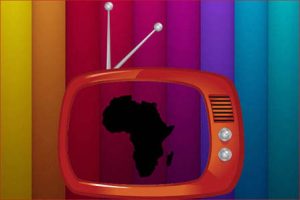
Some African countries might have to skip the June deadline for Digital transition. The process has been engulfed by massive debates around availability of digital infrastructure, controls in set-top boxes, accessibility to digital technology, subsidizing set-top boxes, and so on.
Is Digital TV the indispensable next step? Are the Digital Dividends really worth the transition? Is Analogue Switch off apocalyptic?
10 myths v/s facts about digital migration in Africa.
MYTH #1
Digital broadcasting here, analogue transmission gone!
FACT
The switch to digital broadcasting doesn’t replace analogue transmission in one go. Dual Illumination precedes Analogue Switch off. It is a gradual process.
MYTH #2
Dual Illumination and Analogue Switch off – It is just names, there is no difference?
FACT
Dual illumination period – the period during the transition when television services are broadcast in both analogue and digital. Analogue switch-off – is the next phase, wherein post the transition of a substantial number of subscribers to digital transmission, the analogue transmission is switched off.
MYTH #3
Digital Migration is restricted to digital distribution of broadcasting?
FACT
Digital Migration is a wider concept. It includes digital transmission/distribution, digital production and digital reception. It is digitization at every stage in the value chain.
MYTH #4
The Digital Dividends of the transition aren’t that many?
FACT
The Digital Dividends of the transition includes multi-channelling, content diversification, releasing frequency spectrum, targeted advertising, electronic program guides, interface with mobile and web amongst other things. Multiple TV channels and wider broadband options are the critical payoffs of the transition.
MYTH #5
Digital Migration or DTV will make free-to-air channels inaccessible?
FACT
No. You can still access free to air channels as long as you connect your TV to a set top box or subscribe to Pay TV packs.
MYTH #6
The digital transition frees up spectrum but is that a big deal?
FACT
Digital signals take up less bandwidth and therefore frees up frequency spectrum. Digitization helps tackle frequency congestion and the freed up spectrum band is used for multiple programming, greater broadband accessibility, including rural broadband and new media services.
MYTH #7
A phased transition is better than a One Date Switch over?
FACT
Not really. The transition has to be conducive to the needs and the infrastructure of the country. The choice is between a phased transition within the country and a uniform transition for the whole country. Please note that the choice is not that of pace. The pace might be slow or fast, and independent of the type of transition.
MYTH #8
Digital TV is HDTV?
FACT
DTV includes both the formats, standard and high definition. But as Robert Heron from pcmag.com* points out, “For a true HD experience—regardless of whether you are a cable/satellite subscriber or you receive TV over-the-air using a DTV tuner—everything has to be HD-compatible, including the video material, the video cables connecting the gear, and the TV itself.”
MYTH #9
Digital Migration would be a huge expense incurred on part of the consumer?
FACT
Digitization is one of the major transformative steps in TV for a very long time. The consumer will incur a onetime investment in any of the multiple options to tap digital television. You can connect your existing TV to a converter box, buy a digital TV with a built in digital tuner or subscribe to a Pay TV service. DTV allows you to subscribe to content packs of your choice, including VOD.
MYTH #10
Digital Migration is heavy on lower income groups?
FACT
It may seem that way in the short run, in terms of the expense borne on the set top box/digital TV. Countries have resorted to subsidized boxes to tackle the problem of accessibility. In the long run the overall benefits are definite and progressive. Options are available to suit multiple budgets, instead of paying a standard subscription price. Alongside are the benefits of HD, Video on Demand, Electronic program guides, Minimum signal interference, local content etc.
While the transition might be a bumpy ride, digitization is not an option. It is an indispensable step in the digital world. Digital broadcasting services were launched in United Kingdom way back in 1998 and since then many have jumped onto the digital bandwagon. Increasing efficiency of spectrum use to introduce new media services and wider broadband accessibility, makes it a win-win for both the service providers and the consumers. Digital Transition is a definitive milestone in broadcasting and though contentious and debated, few can contest the digital dividends.

